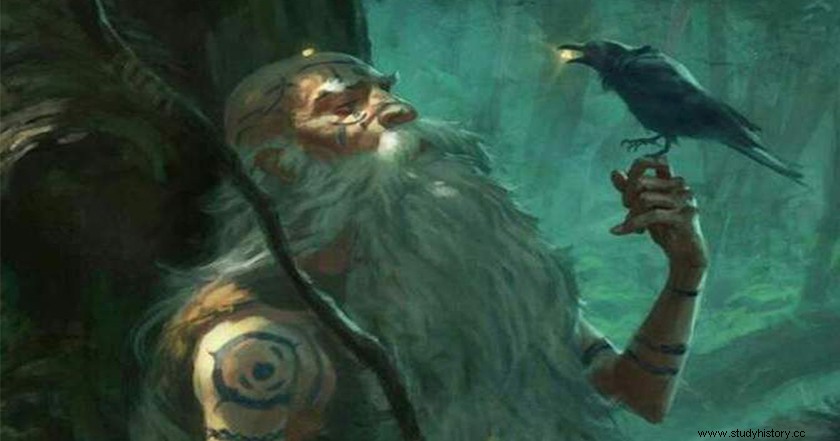
5th century AD C. is a century of profound changes in Western Europe. The Roman Empire disappears from the game board, leaving its western provinces in the hands of the barbarian peoples. In Walking Through History we have touched on the subject on numerous occasions to talk about the events in the Iberian Peninsula, but very rarely have we ventured to talk about the events in the British Isles. Today with The Druid by Steven A. Mckay as a backdrop we are going to approach that dark century, dark due to the lack of sources, but exciting for any history lover.
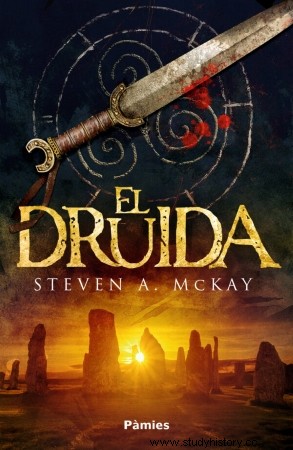
A history, that of Hispania and that of Britannia, which broadly has great similarities when the Romans disappear. Romanization had been greater from south to north in the two provinces. Although more clearly in Britain, where Rome could not conquer the peoples of the north and decided to build two walls. The Antonine to the north and the best known and true border of the empire a little further south, Hadrian's wall. On the other side of the walls were immersed towns that maintained their most ancient traditions, which ended up conforming the post-Roman society with their presence.
As of the year 410, Rome begins to become a memory for the inhabitants of the British Isles. It is evident that her way of life did not change excessively, but where the changes were irrefutable was in her economic and political system. Rome could no longer manage the vast Empire, and she is leaving her children orphans of the protective power. With Gaul devastated by the Germanic peoples, Britannia was far away. It is the Roman powers that withdraw, the circulation of coins disappears and taxes stop traveling to the imperial capital.
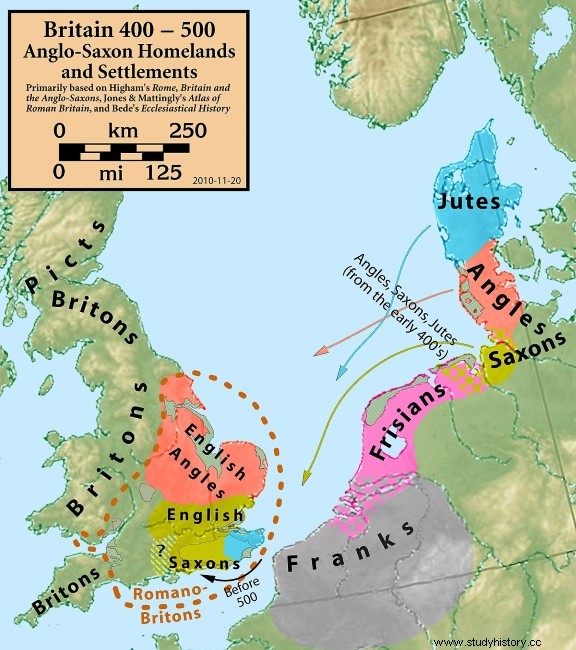
German invasion of Britain
It was the opportunity for new independent communities to emerge and begin to wage war on their own. Now the taxes are collected by these new powers that will end up forming the new kingdoms. These kingdoms that will enter into a clear dispute and that will only unite to fight against the new invader; Saxons, Jutes and Angles, all of them Germanic peoples who choose the British Isles as their destination.
The historical context of The Druid.
Steven A. Mckay is a prolific writer of historical novels based on the outskirts of the Scottish capital, Glasgow. Passionate about the Middle Ages, with The Druid he has approached for the first time the dark and disturbing 5th century.
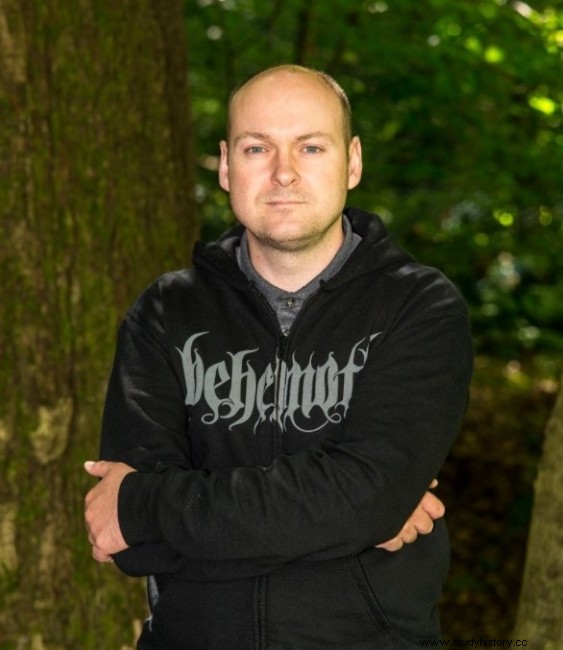
Steven A. Mckay
The Scottish writer has placed his story at the genesis of the Kingdom of Strathclyde , a medieval kingdom that grew up between Hadrian's and Antonine's walls. In the middle of said 5th century, it already appears consecrated in the sources, mainly Irish, around the current Clyde River, that is, the one that passes through Glasgow. Its origin is attributed to the pre-Roman people of the Damnonii , a town that Strabo, the Greek geographer around the 2nd century AD. C., he already presented it to us settled in that place.
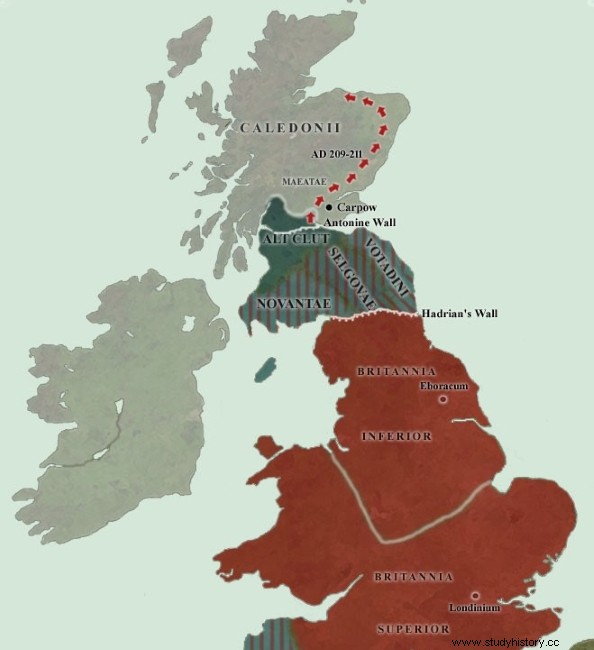
Alt Clut, place of origin of the story of The Druid.
In the year 430, Catia, an eight-year-old girl, daughter of the King of the Damnonii, Carotico, is kidnapped by a group of Saxons. Bellicus, the town's druid, is in charge of chasing the Saxons to rescue Princess Catia. With this simple plot, Steven A. Mckay takes us on a more than interesting journey through 5th century Britain.
Begin by highlighting that the Saxon people are one of the Germanic peoples, geographically located in the north of present-day Germany and south of the Jutland Peninsula. His arrival in Britain occurs during a long historical period that would span the 5th and 6th centuries AD. An aspect that faithfully reflects the novel, since the contingent that kidnaps the girl denotes their recent installation on the eastern coast of Britannia, acting as an advance guard for the great Saxon invasion.
Without a doubt the greatest success of this historical novel is its magnificent setting. Roman cities more populated to the south than to the north. Dozens of small towns where the ancient customs of the pre-Roman peoples have remained present. Dilapidated and dangerous Roman roads abandoned for maintenance in the last centuries of Roman domination of the island. Or like the great Roman forts attached to Hadrian's Wall have been abandoned.
Highlight that there is a constructive element that the author uses magnificently to set the historical novel. "The long house" is the home of the leaders of the communities, the little wrens that are born on the island. A great house where kings and nobles invite the most outstanding characters to win over followers. There they run the food, beer and mead. This constructive form is prior to medieval castles and very common in the towns of northern Europe, without going any further among the Vikings it has been known as "central enclaves".
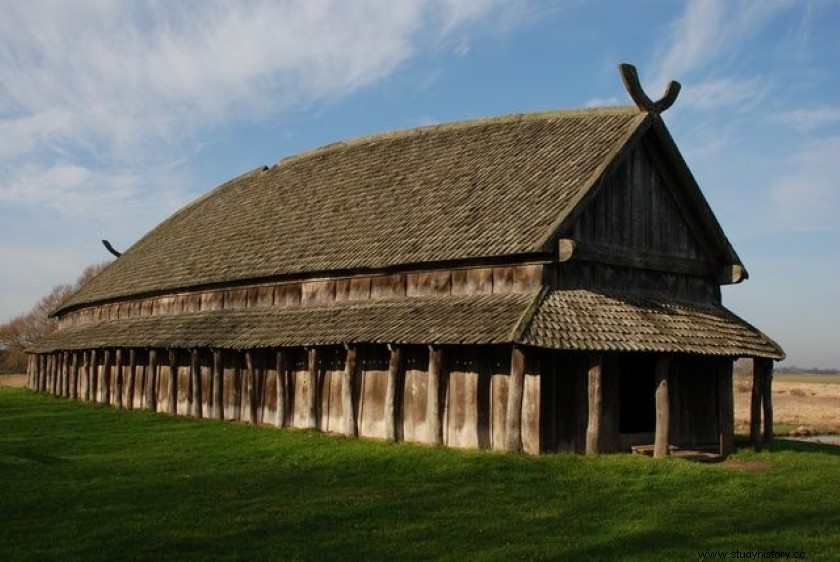
Viking houses, called "central enclaves".
The Druid characters.
The phenomenon of druidism has been described historically from the ancient Greeks to the Romans. Historical figures such as Aristotle, Julius Caesar or Pliny "the elder" told us about the Druids. Despite this, his figure inescapably walks the fine line that separates history from legend. The lack of writing among the Celtic peoples is the main cause of this. Note that they were persecuted both by the Romans and later by the first Christian kingdoms. An aspect that denotes the great power they came to acquire.
A druid is a priest of the Celtic world. Priests to whom various functions are attributed within the community:they directed the religious ceremonies being in charge of the sacrifices, they imparted justice, and they had competence for the education of minors or to help political leaders. Endowed with great wisdom, they were in charge of transmitting traditions and beliefs, and even entertaining the celebrations of the "long house", telling ancient stories or singing songs that praised the gods and warriors.
In this novel by Steven A. Mckay the main protagonist is Bellicus. The druid in the service of King Carotico. A protagonist that I must confess that at first he can overwhelm you, at least it happened to me. In addition to the demonstration that Bellicus had all the attitudes previously referred to the druids, the author gives him another series of powers. From his towering height he commands everything, he is young, intelligent, magnificent warrior, and apparently even highly successful with women. If the same thing happens to you at first, don't get mad at it, since the author does a magnificent job of humanizing it.
In addition to the omnipresent druid, a series of secondary characters parade through the novel. Highlight the Saxons Horsa and Aldred , the eternal dichotomy of good and evil, so present and necessary in literature. Hard , a very special Roman centurion who masterfully embodies the decline of the Roman Empire and the main person in charge of making the druid human. Nostril the queen and wife of Carotico, her infidelity flies over the corners of all the episodes. Catia , an eight-year-old girl, a brave and sad character who takes us on a tour of Britain, to save her from the Saxons. Finally, highlight the role of Cai and Eolas , the two dogs of the druid that will accompany him on the great adventure.
The "historical" characters that pass through the pages of The Druid must be put in quotation marks in all of them. Carotic , the king of the Damnonii appears in the sources of the Christian kingdoms that inherit Roman Britain, even so, we do not know the period where he reigned. The other two characters are more famous, but also more legendary. Arthur and Merlin they share a part of the path with Bellicus. Two characters born in medieval Britain to shed light on the dark 5th century. The legendary heroes that every town needs.
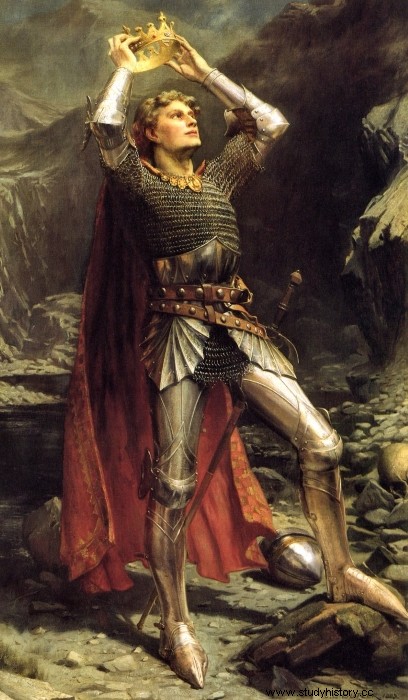
King Arthur.
Afterword.
Although I have already commented on it, I want to reaffirm that the best thing about this historical novel is its setting. The journey is from north to south. In the north the Picts threaten the peoples who have been allies of Rome. Some peoples that, without being subjected to Roman power, do become a necessary stopper for what Rome called barbarians. In exchange, they kept much of their customs, which are reflected in the Damnonii people. A druid was still a respected and feared character due to his supposed ancestral powers.
On his way south Bellicus enters more hostile territory for him. Christianity has been installed among Romanized Britannia to become the greatest enemy of the Druids. There they no longer respect his passage in the same way as in the north, making him more vulnerable.
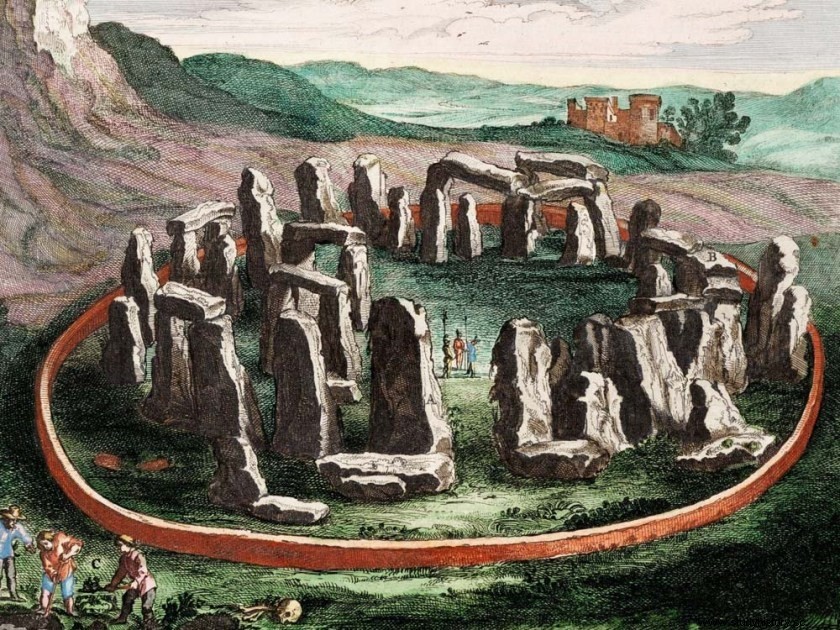
Stonehenge in an engraving from 1645
For last, Steven A. Mckay saves us the best case scenario. The stone circle of Stonehenge is without a doubt one of the main monuments of the British Isles. A magical place wherever you look. Built nearly 5,000 years ago, it fascinated the men and women of the 5th century AD. C., in the same way that today fascinates the men and women of the 21st century. Huge stones weighing tens of tons lifted by Neolithic men. Today it has been chosen as an explanation that he worked as an astronomical observer to predict the changes of season. I'm not going to discuss it, but I've always imagined a great druid acting as a master builder .
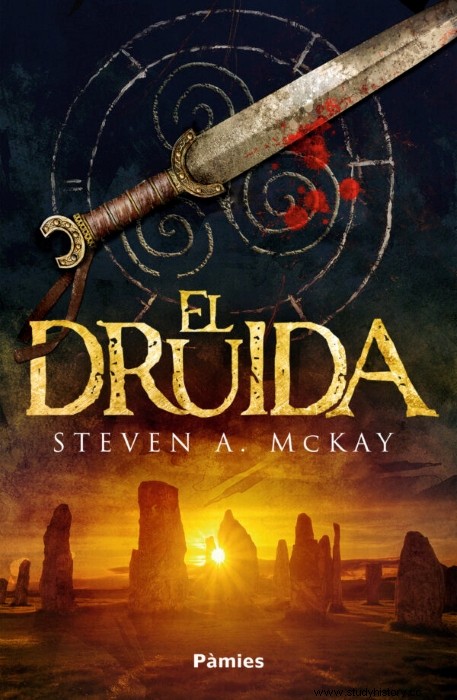
The Druid in Historioteca
